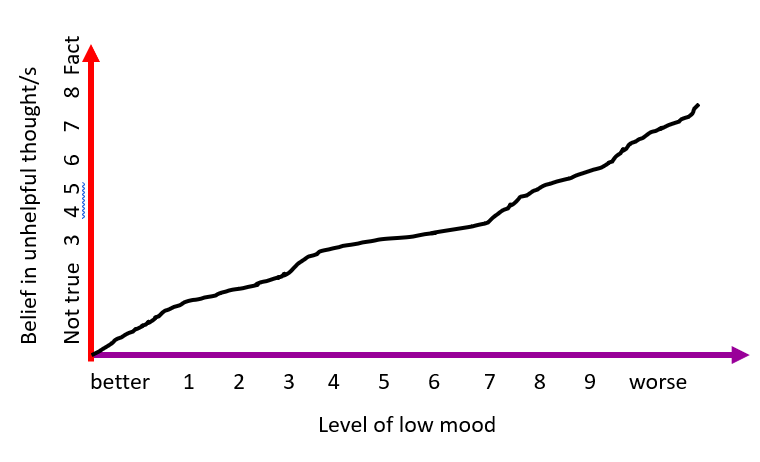Our minds have evolved over many hundreds of thousands of years to be constantly watching out for threat.
The mind works on a ‘better safe than sorry’ principle.
Imagine that you are a tribal warrior crossing the savannah in 20,000 BC to get your village.
If you saw a shape in the grass and thought – ‘That’s a rock’ and it was actually a lion – you would be lion lunch and your careless genes would not be passed on.
BUT if you thought:
‘That’s a lion!!!’
The threat/self-protection system in your body would react automatically to keep you safe. E.g You would run, hide and wait until it was safe.
Here is a video that explains this in more detail:
https://youtu.be/MZJw3_ILEwY
Detecting ‘threat’ can be about the world being unsafe, which causes anxiety, or it can be about detecting faults and flaws in ourselves, looking for reasons why others might reject us, so that we can prevent that from happening and stay safe. If we believe the thought and see it as a truth – it can cause low mood, feelings of hopelessness, low self-esteem.
If you are a human then pain is inevitable, no one gets through life without experiencing distress and difficulty and challenging times.
While we will all experience the unavoidable reality of pain, we also suffer because of our capacity to ruminate about the past, worry about the future and get stuck inside unhelpful judgements of ourselves and others.
Our mind is constantly busy – telling us random things, rehearsing stuff we need to say or do, bringing up memories, predicting what might go wrong and making up things to worry about etc. When it is triggered into an unhelpful and emotionally laden thought, such as ‘No one will like me’, ‘I’m a loser’, it grabs our attention.
When we believe thoughts as truths, it affects the way we feel and behave.

Why are our thoughts often so negative? Watch this to find out:
https://youtu.be/0BF1hJaNtms
Let your mind do its’ thing:
Set a timer for 2 minutes
Notice the activity of your mind. Even if your mind says, ‘I’m not doing this properly’, or ‘Nothing is happening, I’m not having any thoughts’.
Jot down briefly what comes into your mind during the minute
After 2 minutes
Take a look at what you wrote. What do you notice? Was it just a random jumble of thoughts or are you preoccupied with something? Were they profound life changing things or do you now know what you are having for dinner? Just notice.
The function of the mind is to pump out thoughts, like your heart pumps blood around your body.




